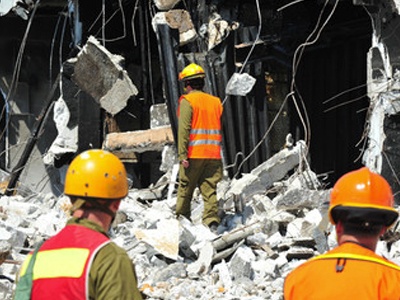
Devastating hurricanes like Andrew and Katrina have resulted in new disaster-mitigation efforts as communities rebuild buildings and infrastructure. The recent deluge of hurricanes in Texas, Florida, Puerto Rico and the U.S. Virgin Islands also offer an opportunity to use state-of-the art strategies to improve rebuilt communities’ ability to withstand future natural disasters.
These resilience strategies include energy efficiency measures. According to a recent newsletter from the U.S. Department of Housing and Urban Development’s Office of Policy Development & Research, materials and technologies that enhance buildings’ energy efficiency can also make them more durable and resilient to hurricanes and other natural disaster.
“Although these efforts may incur additional costs or slow construction or rebuilding, high-performance buildings generate significant long-term savings in energy costs, increase the structures’ durability and reduce the waste produced from damaged or destroyed buildings,” the newsletter states.
Energy efficiency does double duty during disasters
The HUD newsletter lists specific energy-efficiency measures that also help protect buildings against natural disasters, including:
- Heating and cooling improvements - Insulation, double-paned windows, green roofs and hipped roofs help create smaller heating and cooling load demands. This not only decreases the strain on power grids during natural disasters, but is also more likely to keep the building occupants safe if they lose the ability to run furnaces or air conditioners during temperature extremes.
- Seismic resilience - Sturdy plywood or concrete bracing not only lowers a building’s energy consumption, it also helps protect it from earthquakes.
- High wind protection - Multipane windows and concrete or structurally insulated walls boost energy efficiency and are also resistant to debris blown about during a tornado, hurricane or windstorm.
- Flood protection - British researchers are testing flood-resistant sustainable building tools, like timber walls, to see if they can make buildings flood-resilient.
Why energy efficiency should be a part of disaster planning
In the chaos during and after a natural disaster, energy-efficient buildings may not be a priority. Developers, homeowners, communities and governmental entities may also have different goals when it comes to rebuilding. That’s why the National Association of State Energy Officials and its 56 state and territory energy offices recommend making energy efficiency part of disaster mitigation planning and response.
For instance, NASEO’s Resiliency Through Energy Efficiency report says strong working relationships between utilities; private-sector partners; and federal, state and local agencies before a disaster strikes allows for better response, recovery and rebuilding efforts. And if there are already energy-efficiency building codes, energy-efficiency and renewable-energy financing mechanisms, and consumer education efforts in place, that can also make post-disaster rebuilding quicker and more effective.
The HUD newsletter also details how communities can be proactive in both energy efficiency and disaster planning. For instance, solar panels, biomass and heat pumps on buildings in flood zones not only save energy, but remain operational during high-water events like hurricanes.
Microgrids allow a community to disconnect from a utility during a natural disaster. They also encourage on-demand energy usage on an everyday level. And energy-efficient smart meters can provide crucial information to utilities about the location of power outages during natural disasters.
“Energy efficiency is an essential component of any resilience strategy because it aids emergency response and recovery, helps with disaster mitigation, and provides social and economic benefits,” the HUD newsletter concludes.
Consider using AM Conservation Group for your energy efficiency and water conservation needs.






